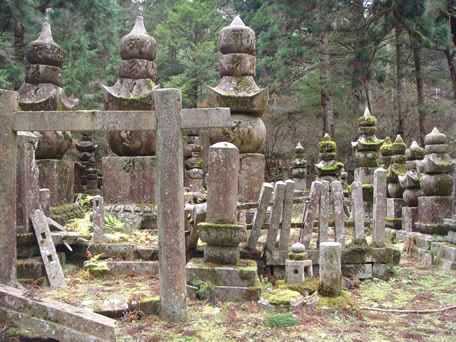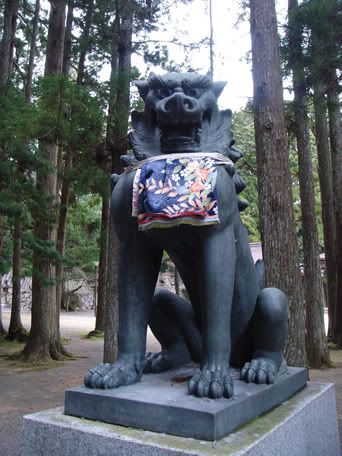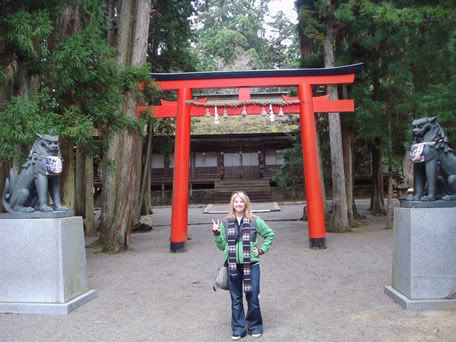So far, it's pretty awesome ^_^ I've never recommended anything here before, but this one's pretty good, and it's full of good information about Japan.
One part, in particular, struck me as a good opportunity to show off a couple pics from a recent trip I took to Koyasan, a sacred mountain near Osaka that is full of temples and shrines and one very enormous graveyard

The part of the book I'm talking about is close to the beginning, actually right at the start of chapter 7, where he describes the stone statues that are always found guarding the entrance to Shinto shrines

You approach Shinto shrines through torii gates, the entrances are usually guarded by a pair of stone lion-dogs. Like so many things Japanese, these lion-dogs came to Japan from China through a Korean intermediary. When they define themselves, the Japanese tend to skip Korea, the middle-man, and claim a connection to China that is direct and overemphasized. But here, in the shrine grounds of the gods, the Korean connection is acknowledged: the guardians are called koma-inu, "Korean dogs." That Korean icons should protect the repositories of all that is Japanese in spirit- the Emperor's Church in a sense - that Korean dogs should be given such a high-ranking position is something rarely commented upon by the Japanese. These stone guardians provide a telling clue about the ancient Korean roots of the Japanese Imperial Family.
The lion-dogs were originally a lion and a dog, and were very different in appearance, but over the years stonecutters found it easier to carve them to the same proportions. The two figures grew more and more alike, until their features blended. One lion-dog has a mouth that is always open, the other has a mouth that is always closed. The open-mouthed lion-dog is named 'Ah', the other is named 'Un', or more properly, 'nn'. "Ah," is the first sound you make when you are born, "nn," the last sound you make when you die. "Ah" is the breath inhaled that begins life, "nn" the exhale of existence, a universe that turns on a single breath. 'Ah' is also the first symbol in the Japanese alphabet, 'n' the last. And so, between these two lion-dogs, you also have the A and Z, the Alpha and Omega. In the original Sanskrit, 'ah-un' means "the end and the beginning of the universe; infinity unleashed."

Infinity unleashed! word.
BTW, the book is actually much funnier than the above passage would imply. For example, in describing a conversation he has with some kids in the back of a car...
His eyes widened with an audible boing. "English! You speak English! Say something, say something in English."
"Wayne Newton is the Antichrist."
"Wow! What does that mean?"
"It's a poem. Kind of a haiku."
HAHAHAHAHAHAHAHA =D

1 comment:
heh, I may have to get this... it is the way I think I'd like to see Japan...
Wayne Newton... falls over laughing.
Post a Comment